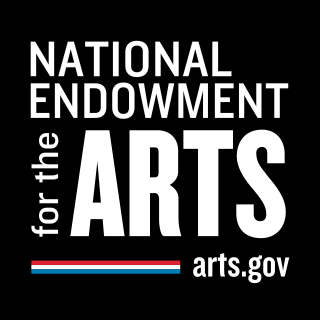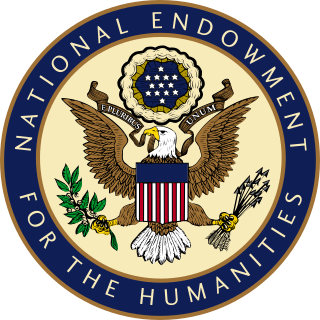
The Department of the Treasury (USDT) is the national treasury and finance department of the federal government of the United States, where it serves as an executive department. The department oversees the Bureau of Engraving and Printing and the U.S. Mint. These two agencies are responsible for printing all paper currency and minting coins, while the treasury executes currency circulation in the domestic fiscal system. It collects all federal taxes through the Internal Revenue Service; manages U.S. government debt instruments; licenses and supervises banks and thrift institutions; and advises the legislative and executive branches on matters of fiscal policy. The department is administered by the secretary of the treasury, who is a member of the Cabinet. The treasurer of the United States has limited statutory duties, but advises the Secretary on various matters such as coinage and currency production. Signatures of both officials appear on all Federal Reserve notes.
The United States order of precedence is an advisory document maintained by the Ceremonials Division of the Office of the Chief of Protocol of the United States which lists the ceremonial order, or relative preeminence, for domestic and foreign government officials at diplomatic, ceremonial, and social events within the United States and abroad. The list is used to mitigate miscommunication and embarrassment in diplomacy, and offer a distinct and concrete spectrum of preeminence for ceremonies. Often the document is used to advise diplomatic and ceremonial event planners on seating charts and order of introduction. Former presidents, vice presidents, first ladies, second ladies, and secretaries of state and retired Supreme Court justices are also included in the list.

The National Endowment for the Arts (NEA) is an independent agency of the United States federal government that offers support and funding for projects exhibiting artistic excellence. It was created in 1965 as an independent agency of the federal government by an act of the U.S. Congress, signed by President Lyndon B. Johnson on September 29, 1965. It is a sub-agency of the National Foundation on the Arts and the Humanities, along with the National Endowment for the Humanities, the Federal Council on the Arts and the Humanities, and the Institute of Museum and Library Services.

The White House Fellows program is a non-partisan fellowship established via Executive Order 11183 by President Lyndon B. Johnson in October 1964. The fellowship is one of USA's most prestigious programs for leadership and public service, offering exceptional US Citizens first-hand experience working at the highest levels of the federal government. The fellowship was founded based upon a suggestion from John W. Gardner, then the president of Carnegie Corporation and later the sixth secretary of health, education, and welfare.

The National Endowment for the Humanities (NEH) is an independent federal agency of the U.S. government, established by the National Foundation on the Arts and the Humanities Act of 1965, dedicated to supporting research, education, preservation, and public programs in the humanities. The NEH is housed in the Constitution Center at 400 7th St SW, Washington, D.C. From 1979 to 2014, NEH was at 1100 Pennsylvania Avenue, N.W., Washington, D.C., in the Nancy Hanks Center at the Old Post Office.
The President's Committee on the Arts and the Humanities (PCAH) is an advisory committee to the President of the United States on cultural issues. It works directly with the White House and the three primary cultural agencies: the National Endowment for the Arts (NEA), National Endowment for the Humanities (NEH), and the Institute of Museum and Library Services (IMLS), as well as other federal partners and the private sector, to advance wide-ranging policy objectives in the arts and humanities. These include considerations for how the arts and humanities sectors can positively impact community well-being, economic development, public health, education, civic engagement, and climate change across the United States.

Stephen John Brademas Jr. was an American politician and educator originally from Indiana. He served as Majority Whip of the United States House of Representatives for the Democratic Party from 1977 to 1981 at the conclusion of a twenty-year career as a member of the United States House of Representatives. In addition to his major legislative accomplishments, including much federal legislation pertaining to schools, arts, and the humanities, he served as the 13th president of New York University from 1981 to 1992, and was a member of and subsequently the chairman of the board of the Federal Reserve Bank of New York. In addition he was a board member of the New York Stock Exchange and the Rockefeller Foundation.

Nancy Hanks was an American arts administrator and art historian. She was the second chairman of the National Endowment for the Arts (NEA), appointed by President Richard M. Nixon and served from 1969 to 1977, continuing her service under President Gerald R. Ford. During this period, Hanks was active in the fight to save the historic Old Post Office building in Washington, D.C. from demolition. In 1983, it was officially renamed the Nancy Hanks Center, in her honor.
Francis Keppel was an American educator. As U.S. Commissioner of Education (1962–1965) he was instrumental in developing the Elementary and Secondary Education Act of 1965 and in overseeing enforcement of the Civil Rights Act of 1964 in the schools. In 1966, he became head of the General Learning Corporation. Keppel later served on the New York City Board of Higher Education (1967–1971) and on Harvard's Board of Overseers (1967–1973). In 1974 he became founding chairman of the Lincoln Center Institute and director of the education policy program at the Aspen Institute.

The Institute of Museum and Library Services (IMLS) is an independent agency of the United States federal government established in 1996. It is the main source of federal support for libraries and museums within the United States, having the mission to advance, support, and empower America’s museums, libraries, and related organizations through grantmaking, research, and policy development.” In fiscal year 2023, IMLS had a budget of $313.58 million. As of 2023, IMLS currently has 70 full-time employees, many of whom still work remotely. In 2022, the employees voted to unionize, joining hundreds of thousands of federal workers who have joined the American Federation of Government Employees (AFGE) to “build power and have a voice at work.”
Executive Schedule is the system of salaries given to the highest-ranked appointed officials in the executive branch of the U.S. government. The president of the United States appoints individuals to these positions, most with the advice and consent of the United States Senate. They include members of the president's Cabinet, several top-ranking officials of each executive department, the directors of some of the more prominent departmental and independent agencies, and several members of the Executive Office of the President.

Preserve America is a United States government program, established under President George W. Bush, intended to encourage and support community efforts to preserve and enjoy the country's cultural and natural heritage.

The D.C. Commission on the Arts and Humanities (CAH) is an agency of the District of Columbia government. As of October 2022, the Interim Executive Director is David Markey. CAH was created as an outgrowth of the U.S. Congress Act that established the National Foundation on the Arts and Humanities of 1965. The Foundation provided for four operating federal agencies including the National Endowment for the Arts and the National Endowment for the Humanities.

Jon Parrish Peede is an American book editor and literary review publisher, who served as the chairman of the National Endowment for the Humanities from 2018 to 2021.
Anne-Imelda Marino Radice is an American art historian and curator. Radice currently serves as the Management Analyst for the National Endowment for the Humanities.
Neil Harris is an American cultural historian. He is the Preston and Sterling Morton Professor of History and Art History Emeritus at the University of Chicago.
Most cultural policy in the United States is enacted at the local and state level, though federal programs also exist to carry out cultural policy. These promote the culture of the United States, including visual art, performing arts, heritage, language, museums, libraries, and sports.











